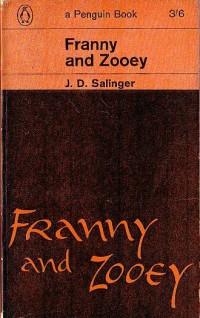

People well know this author for his reclusive nature. Works, most notably novel The Catcher in the Rye (1951), of American writer Jerome David Salinger often concern troubled, sensitive adolescents. Written in Salinger’s typically irreverent style, these two stories offer a touching snapshot of the distraught mindset of early adulthood and are full of the insightful emotional observations and witty turns of phrase that have helped make Salinger’s reputation what it is today. When Franny’s emotional and spiritual doubts reach new heights, her older brother Zooey, a misanthropic former child genius, offers her consolation and brotherly advice. The second story in this book, ‘Zooey’, plunges us into the world of her ethereal, sophisticated family. They appear to be the perfect couple, but as they struggle to communicate with each other about the things they really care about, slowly their true feelings come to the surface. Salinger’s fictional Glass family.įranny Glass is a pretty, effervescent college student on a date with her intellectually confident boyfriend, Lane. And the worst part is, if you go bohemian or something crazy like that, you’re conforming just as much only in a different way.’įirst published in The New Yorker as two sequential stories, ‘Franny’ and ‘Zooey’ offer a dual portrait of the two youngest members of J. But just so tiny and meaningless and-sad-making. And even if I could, I'm not sure I'd feel like it.‘Everything everybody does is so-I don’t know-not wrong, or even mean, or even stupid necessarily. I mean you'd be different in some way-I can't explain what I mean. Or you'd just passed by one of those puddles in the street with gasoline rainbows in them. Or you'd heard your mother and father having a terrific fight in the bathroom. Or you'd have a substitute taking the class, instead of Miss Aigletinger. Or the kid that was your partner in line the last time had got scarlet fever and you'd have a new partner. Not that you'd be so much older or anything. The only thing that would be different would be you. You could go there a hundred thousand times, and that Eskimo would still be just finished catching those two fish, the birds would still be on their way south, the deers would still be drinking out of that water hole, with their pretty antlers and they're pretty, skinny legs, and that squaw with the naked bosom would still be weaving that same blanket. “The best thing, though, in that museum was that everything always stayed right where it was.


 0 kommentar(er)
0 kommentar(er)
